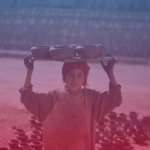
Written by: Saee Mandhare, Writer
Edited by: Iorgus-Serghei Cicala
Abstract
The collapse of the Assad regime in Syria marked a turning point in its political landscape and brought into question the future of its displaced population. While repatriation is often framed as a moment of hope and opportunity, this article argues that regime change introduces a period of heightened ‘limbo’ for refugees, increasing their uncertainty. The article highlights the contradictions in the timing of repatriation policies that leave refugees in a precarious position by looking at the policy responses of host states, NGOs, and policy institutions. This limbo also affects the voluntary nature of refugee returns. It concludes by contextualising the need for policies that account for refugee uncertainty rather than exacerbating it.
Introduction
On December 8, 2024, the nearly fourteen-year Syrian Civil War came to an end with the overthrow of the Assad regime by armed opposition forces, marking a significant turning point in the country’s political landscape. The new interim government, largely composed of officials from the Hayat Tahrir al-Sham (HTS) group under the leadership of Ahmed al-Sharaa, vowed to form a new, inclusive government in Syria representing diverse communities (Reuters, 2025). What started with a national uprising ended up being one of the largest displacement crises in the world, with over 12 million reported Syrians displaced within the region and about 5.2 million living as refugees in other countries (UNHCR, 2024). This massive transition now brings into question a new future for the displaced populations as Syria attempts to find its way to post-conflict stability.
The transition following a regime change is often framed as a moment of new possibilities, yet it can instead introduce several challenges for displaced populations, especially regarding the question of their return. Since the ousting in December, 750,000 internally displaced persons have returned home, and since January 2024, a total of 571,388 individuals have returned to Syria from abroad (International Organization for Migration, 2025). This article examines the wave of post-Assad policy responses from countries hosting Syrian refugees and international actors, in order to better understand the complex return dynamics. It argues that the timing of repatriation policies exacerbates uncertainty for displaced populations, leaving them in a prolonged state of limbo after a regime change in the country they fled. It also argues that the voluntary nature of refugee returns is affected not only by the competing interests of external actors but also by persistent insecurity and prolonged uncertainty. Lastly, the article concludes by reflecting on the refugees’ uncertain condition and the imperative for host countries to implement policies that account for this ‘limbo’.
Responses to the Regime Change
Moments after the Assad government’s collapse was announced, news sites were flooded with reports on various actors’ responses to this change. European countries hosting Syrian refugees, including Austria, the United Kingdom and Denmark, immediately declared their intent to reassess their asylum policies (Reuters, 2024). This primarily involved reviewing or pausing pending asylum applications from Syrian nationals (ibid.). The Prime Minister of Lebanon, Syria’s neighbouring country, called for resident Syrian refugees to return home, as this would be the best outcome for them (EuroNews, 2024). He also mentioned the substantial strain that refugees had placed on his country’s resources (ibid.). The conservative right in Germany, consisting of parties like the Christian Democratic Union (CDU) and the Alternative for Germany (AfD), was quick to suggest plans encouraging Syrians to return home (Deutsche Welle, 2025). Alice Weidel, from the AfD, said that “Anyone in Germany who celebrates ‘free Syria’ evidently no longer has any reason to flee. They should return to Syria immediately” (ibid.). The Austrian government, along with pausing asylum applications, promptly announced a plan to issue a bonus of 1000 euros to every Syrian asylum-seeker who wanted to return (Reuters, 2024). Whilst there were no plans to carry out forced deportations, voluntary deportations began swiftly after the regime collapse (ibid).
These responses, however, elicited critique from other actors involved, such as NGOs and policy institutes, for being premature and at odds with the interests of the displaced population (Amnesty International, 2024; Kurd Ali and El-Sadany, 2024; Davidoff-Gore and Fratzke, 2024). The UNHCR, declaring Syria still unsafe and unstable, stated that the situation needs to be further observed and monitored before any firm decisions can be made (2024). It also called on host countries to suspend the issuance of negative decisions to Syrian applicants for international protection (ibid.). Kurd Ali and El-Sadany (2024) critiqued the decision to pause applications as they were made hastily, without clarity on the length and duration of these pauses. By pausing these applications, asylum seekers would be left in limbo, unable to function in their host country until they returned (ibid.). Davidoff-Gore and Fratzke, experts in migration policy, similarly critiqued such decisions, arguing that Syria remains unstable, with large parts of the country destroyed or severely damaged by the conflict, and unable to support a mass influx of repatriating citizens (2024). In an interview with France 24, Fratzke also says that one would need to wait and see before any decisions on mass returns can be made (2024).
Two things become evident from this: the crucial role of timing in repatriation policy decisions and actions following regime change, as well as the significant influence of competing interests and priorities among various actors in shaping these policies. The following discussion will further unpack these two key aspects and argue that they contribute to heightened uncertainty and precarity among displaced people whose return is now in question.
Temporal Dynamics of Refugee Returns
Temporality and uncertainty have been central themes in understanding refugee experiences across different stages of displacement. Scholars such as Weiss (2020) have explored how refugees navigate uncertainty during processes of flight, asylum-seeking, and deportation. Extending the present discussion, Kusk (2023) explains how uncertainty persists even after refugees are granted protection statuses, as their rights and long-term stability remain precarious. Now, within the context of the Syrian regime change, the article highlights a further stage of refugee uncertainty. This is the period following a regime change, when the question of return is raised.
As mentioned above, the decision by host countries to pause asylum applications or reconsider refugee statuses happened mere moments after the fall of the regime. Criticising these responses for being premature, NGOs and policy institutes offered a more cautious, alternative approach to wait before making any firm decisions. This was to ensure more long-term, sustainable returns (Davidoff-Gore and Fratzke, 2024). Therefore, the decision regarding their current status, which impacts their legality and well-being in the host country, was made shortly after the regime change. Concrete plans, however, for ensuring their return were not yet developed as these required careful observation and monitoring. The Interior Minister of Germany, Nancy Faesar, said that it is too soon to talk about concrete plans concerning returnees (Salahie & MacGregor, 2024), but this was after Germany had already put all asylum applications on hold (Reuters, 2024). Moreover, the elimination of active persecution by the Assad Regime does not immediately make it safe or sustainable for refugees to return. Many refugees still lack clarity on what awaits them in Syria, particularly in terms of livelihoods, housing, and security (Kurd Ali and El-Sadany, 2024). The country remains in a state of instability, with fragile infrastructure and limited economic opportunities (ibid.). This tension, between a) premature decisions concerning a refugee’s present legal status and b) an undefined timeline and conditions for their potential return, and c) an indeterminate future in Syria, leaves many in an even more intensified state of limbo than argued by Kurd Ali and El-Sadany (2024). Refugees are not only unable to fully integrate into their current country of residence, but are also unsure about how and when they can return and to what they will be returning to. This is paradoxical. On the one hand, host countries argue that refugees no longer need long-term protection, rights guarantees, and access to facilities thanks to the feasible return prospects. On the other hand, the country of origin remains too unstable to provide repatriated refugees with adequate support.
Voluntariness of Refugee Returns
The current consensus is that repatriation should be voluntary, meaning that only Syrians who want to return should do so, with efforts required to provide refugees with adequate relocation assistance (UNHCR, 2024; Amnesty International, 2024). However, the decision of ‘voluntary’ returns does not take place in a vacuum. As mentioned above, factors such as resource burdens faced by host countries and politics of rising anti-immigrant sentiments, affect such choices. The decision to pause asylum applications, for instance, influenced by politics in the host country, places additional stress on refugees residing there. This can push individuals to return even if they do not feel ready, as remaining in the host country becomes increasingly untenable. Moreover, as immigrants remain at the center of heated and contentious political debates, this climate itself could act as an indirect constraint on their ability to make a truly free return decision. While host countries have not yet carried out forced deportations, these indirect mechanisms of pressure including revoking temporary protections, limiting access to work, or offering financial incentives for return, create conditions where refugees may feel compelled to leave.
Additionally, many other factors influence the ‘voluntary’ return of refugees once the threat in their home country is eliminated. For example, host countries face a contradictory set of incentives: while they seek to reduce the refugee population due to economic and political pressures, they may simultaneously wish to retain those who have been successfully integrated and are filling critical labor shortages. German Interior Minister Nancy Faeser stated that Syrians who are integrated, employed, and contributing to the economy should be encouraged to stay in Germany, as their departure would severely impact the country’s health sector and broader economy (EuroNews, 2024). This selective approach to repatriation complicates the nature of voluntariness.
This article argues that, along with the factors mentioned above, the state of limbo in which refugees find themselves is not just a passive state but an active external force shaping their decision to return. Being caught between a host country that no longer offers full protections and a home country that remains unstable leaves refugees in a precarious position, where access to jobs, housing, and social services is severely limited. When refugees experience prolonged uncertainty—facing restrictions in host countries while also lacking guarantees of stability in Syria—their choices become increasingly constrained. The decision to return, then, is not always a reflection of genuine readiness but rather a response to the state of limbo that makes remaining in their host country untenable.
Conclusion
A significant number of Syrian refugees have already returned home, with many expressing a genuine desire to do so (United Nations, 2025). However, it is crucial to understand the challenges refugees face when the question of their return arises. Particularly, how delays and inconsistencies in the timing of policy implementation can leave them in a state of heightened uncertainty. While long-term and sustainable policy planning to ensure returns is necessary, the interim “waiting period” before decisions are implemented carries its own consequences, shaping the lives and futures of refugees in ways that remain underexplored.
To address this, more research into the uncertainty at this stage of displacement is needed to ensure that policy responses account not just for the future of repatriation but also for the realities of liminality that refugees experience in the meantime. An important step towards this is to further research on bridging the gap between policy decisions and lived experiences of individuals. This can ensure that repatriation strategies are informed not just by top-down frameworks but by a deeper understanding of refugees’ uncertainty. Mechanisms of increased and improved communication and transparency between decision-makers and individuals, such as creating channels for two-way communication, can help do this.
Moreover, understanding variation in the uncertainty experienced by refugees also contributes towards making more informed-policy decisions. Syrian refugees have sought asylum in more than 130 countries (UNHCR, 2025) and may experience varying degrees of uncertainty depending on each country’s residency conditions, availability of resources and political pressures. Ultimately, recognising that refugees’ experiences, both collective and individual, can shape rather than just react to repatriation decisions remains crucial to their well-being as they try to navigate the new political reality in Syria.
References
Amnesty International. (2024, December 10). Europe: Safety of Syrians in Europe must not be sacrificed to political interests. Retrieved from https://www.amnesty.org/en/latest/press-release/2024/12/europe-safety-of-syrians-in-europe-must-not-be-sacrificed-to-political-interests/
Davidoff-Gore, S & Fratzke, S. (2024). The Complicated Reality of Syrians’ Return. Migration Policy Institute. Retrieved from https://www.migrationpolicy.org/news/post-assad-returns-syria.
Deutsche Welle. (2025, December 12). Germany starts Syrian migration debate after Assad’s fall. Politics Germany. Retrieved from https://www.dw.com/en/germany-starts-syrian-migration-debate-after-assads-fall/a-71011692.
EuroNews. (2024). Germany hopes thousands of Syrian doctors will stay after al-Assad’s ouster. Health News. Retrieved from https://www.euronews.com/health/2024/12/19/germany-hopes-thousands-of-syrian-doctors-will-stay-after-al-assads-ouster.
EuroNews. (2024, December 15). Mikati calls for Syrian refugees in Lebanon to return home citing strain on resources. News, World, Lebanon. Retrieved from https://www.euronews.com/2024/12/15/mikati-calls-for-syrian-refugees-in-lebanon-to-return-home-citing-strain-on-resources.
France 24. (2024 December 2024). Any decision to force people to return to Syria would be very premature: migration policy analyst. France 24 News. Retrieved from https://www.youtube.com/watch?v=WdKB9PvOh0k.
International Organization for Migration. (2025, March 7). Nearly 750,000 Displaced Syrians Have Returned to Their Places of Origin, New IOM Data Reveals. UN Migration, Press Release. Retrieved from https://mailchi.mp/d0a22d39a508/nearly-750000-displaced-syrians-have-returned-to-their-places-of-origin-new-iom-data-reveals?e=70747c07d0.
Kurd Ali and El-Sadany (2024, December 18). Left in Limbo: Uncertainty For Europe’s Syrian Refugees Post-Assad. The Tahrir Institute for Middle East Policy. Retrieved from https://timep.org/2024/12/18/left-in-limbo-uncertainty-for-europes-syrian-refugees-post-assad/
Kusk, M.L. (2023). ‘I Can’t Create a Future with a Temporary Permit’: Refugees and Long-Term Temporary Protection in Denmark. Nordic Journal of Migration Research, 13(4): 9, 1-19. Retrieved from https://journal-njmr.org/articles/10.33134/njmr.569.
Murphy, F. (2024). Austria offers Syrian refugees 1,000 euros to return home. Reuters. Retrieved from https://www.reuters.com/world/austria-offers-syrian-refugees-1000-euros-return-home-2024-12-13/
Reuters. (2025 January 30). Syrian leader Sharaa pledges to form inclusive government. Retrieved from https://www.reuters.com/world/middle-east/syrian-leader-sharaa-pledges-form-inclusive-government-2025-01-30/.
Reuters. (2024). European countries halt Syrian asylum applications after Assad’s fall. Retrieved from https://www.reuters.com/world/european-countries-halt-syrian-asylum-applications-after-assads-fall-2024-12-10/
Salahie, D. & MacGregor, M. (2024). ‘I want to go back and help rebuild Syria … when it is safe’. InfoMigrants, Features. Retrieved from https://www.infomigrants.net/en/post/61655/i-want-to-go-back-and-help-rebuild-syria–when-it-is-safe.
UN High Commissioner for Refugees (UNHCR). (December 2025). Syria Refugee Crisis Explained. USA for UNHCR. Retrieved from https://www.unrefugees.org/news/syria-refugee-crisis-explained/#:~:text=Syrian%20refugees%20have%20sought%20asylum,of%20Syrian%20refugees%3A%202.8%20million
UN High Commissioner for Refugees (UNHCR). (December 2024). Position on Returns to the Syrian Arab Republic. Retrieved from https://www.refworld.org/policy/countrypos/unhcr/2024/en/149254.
United Nations. (2025, March 29). UN agencies warn of worsening humanitarian crisis in Syria. United Nations News. https://news.un.org/en/story/2025/03/1160886
Weiss, N. (2020). The trauma of waiting: understanding the violence of the benevolent welfare state in Norway. Refugees and the violence of welfare bureaucracies in Northern Europe (pp. 195-209). Manchester: Manchester University Press.

 The ’Ndrangheta’s Infiltration and Threat to European Institutions
The ’Ndrangheta’s Infiltration and Threat to European Institutions  From Paper to Practice: How Grassroots Norms Undermine Gender Rights in Pakistan
From Paper to Practice: How Grassroots Norms Undermine Gender Rights in Pakistan  Exploited Childhoods: The Role of Global Corporations in Perpetuating and Mitigating Child Labour
Exploited Childhoods: The Role of Global Corporations in Perpetuating and Mitigating Child Labour  Human Rights Challenges in Addressing SLAPPs in Media, NGOs and Journalism in the EU
Human Rights Challenges in Addressing SLAPPs in Media, NGOs and Journalism in the EU 


